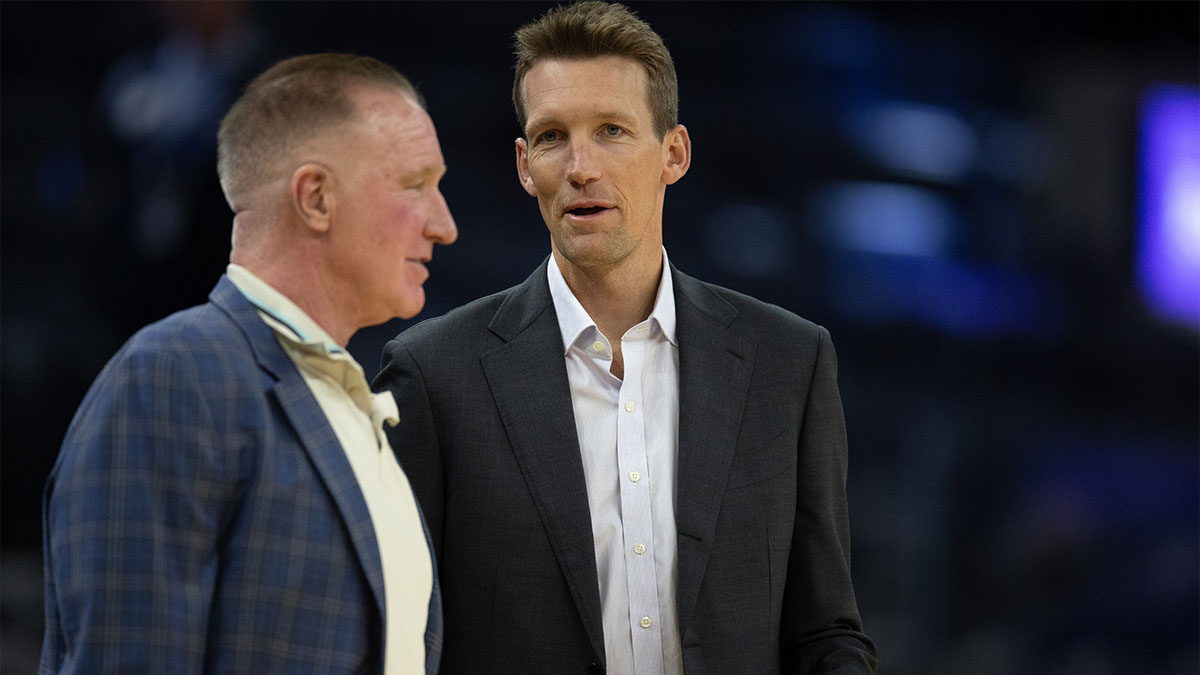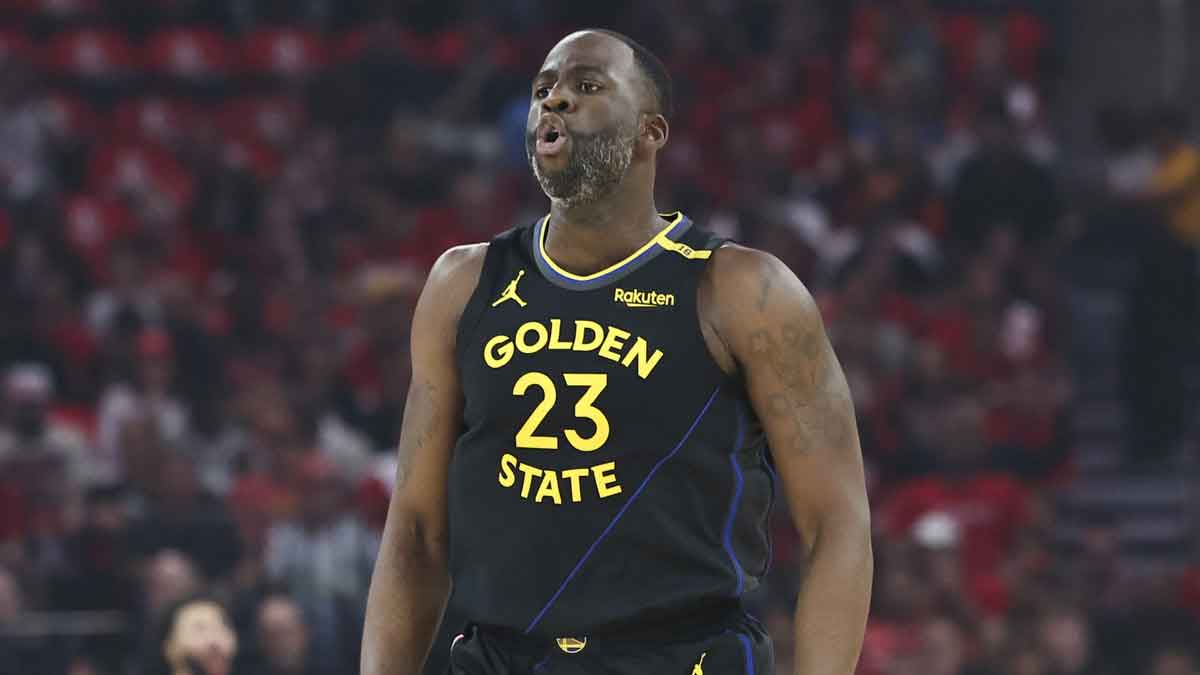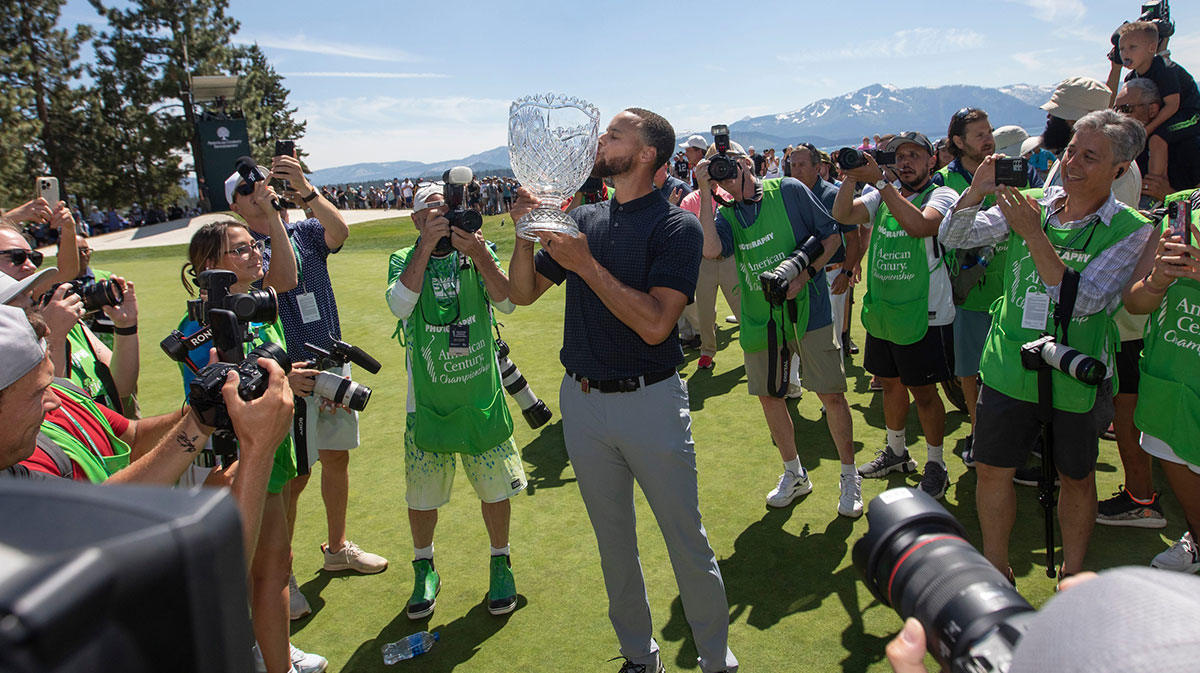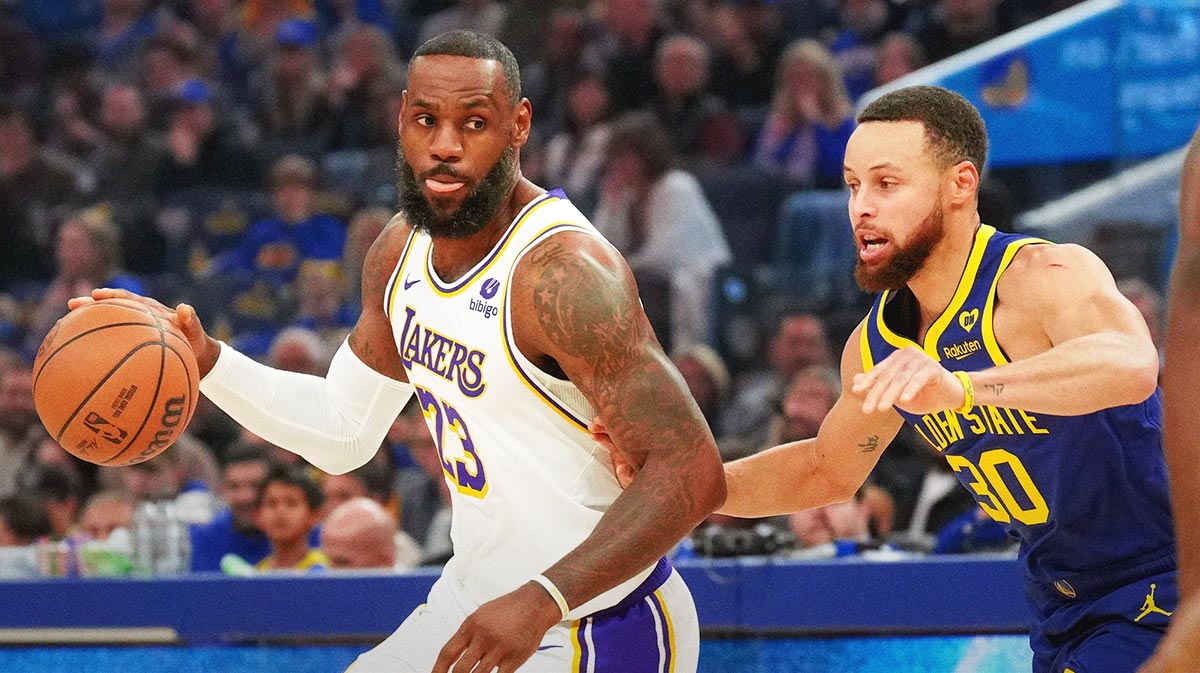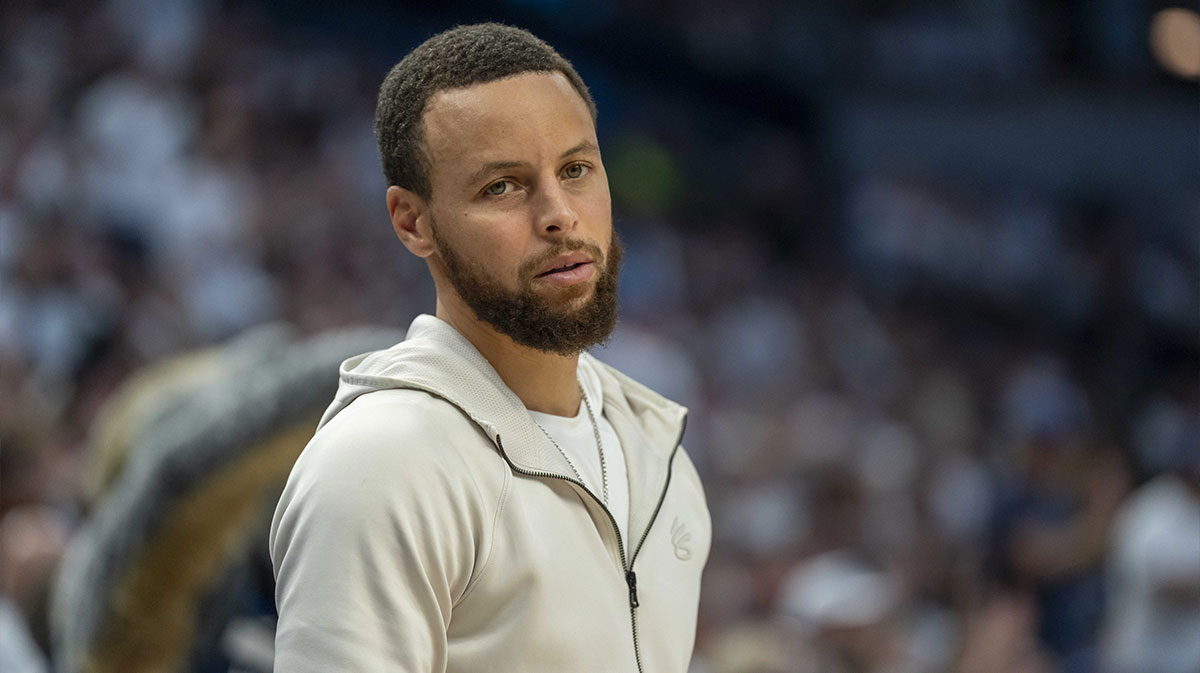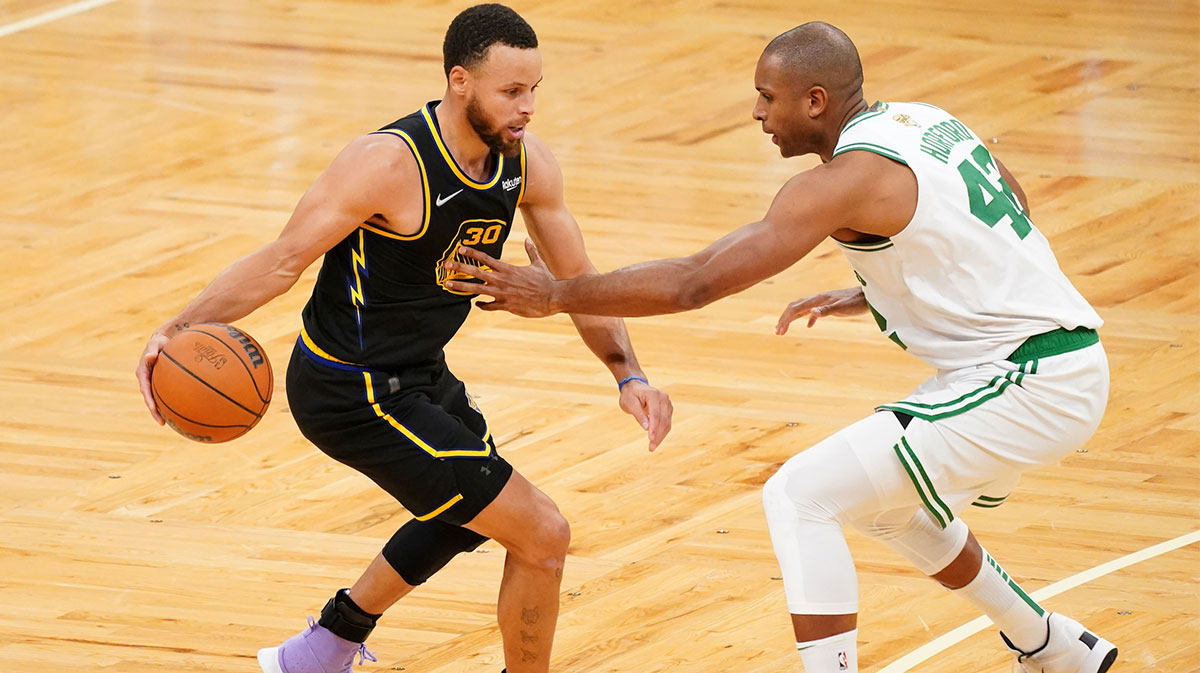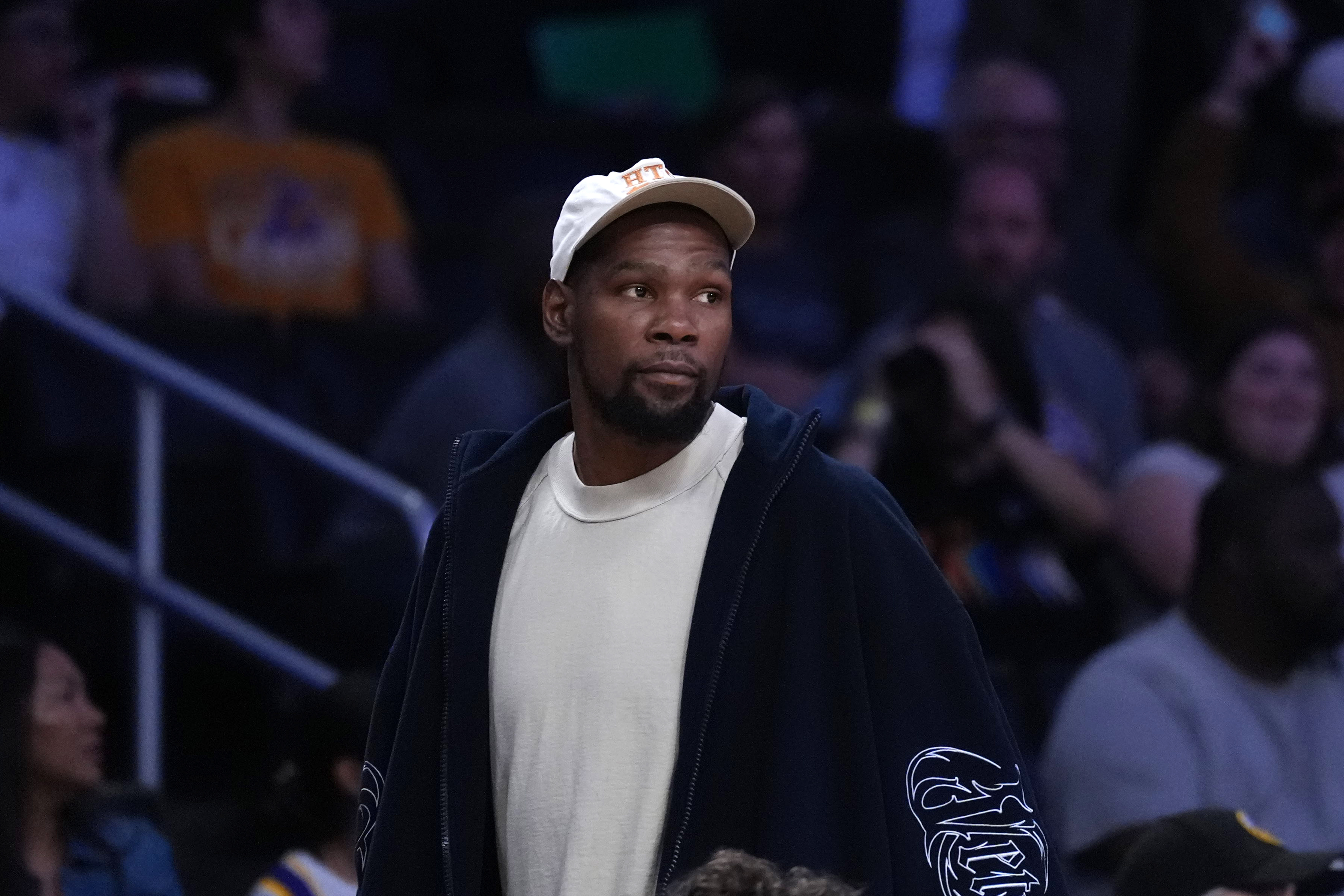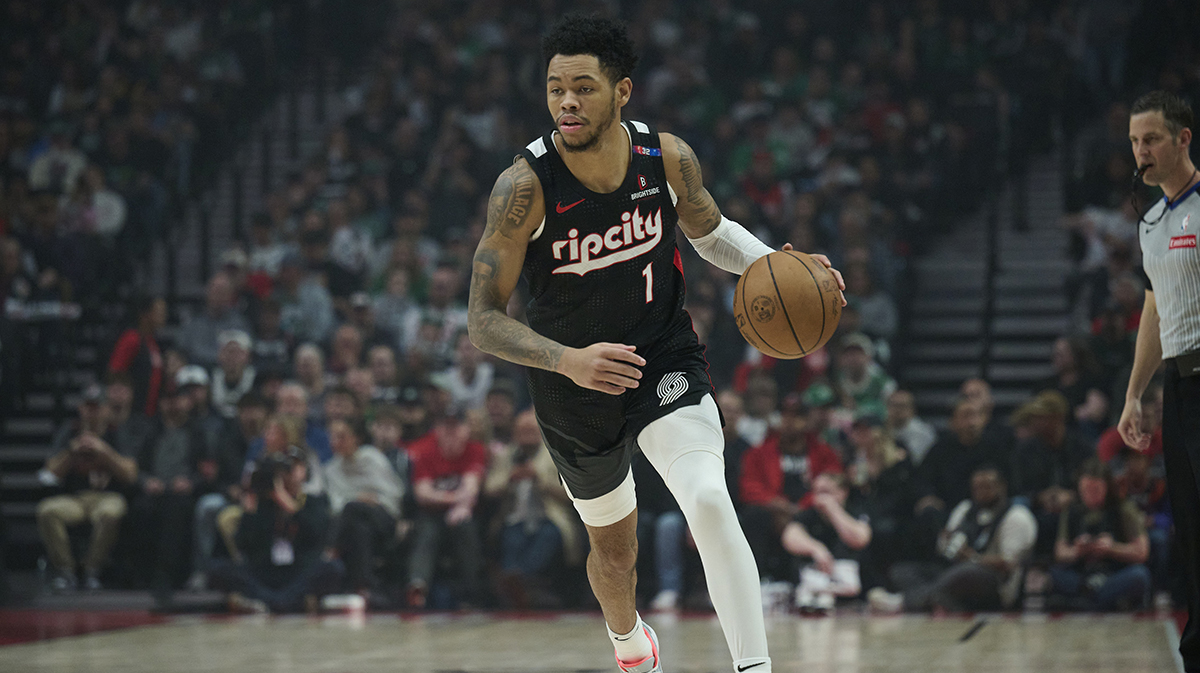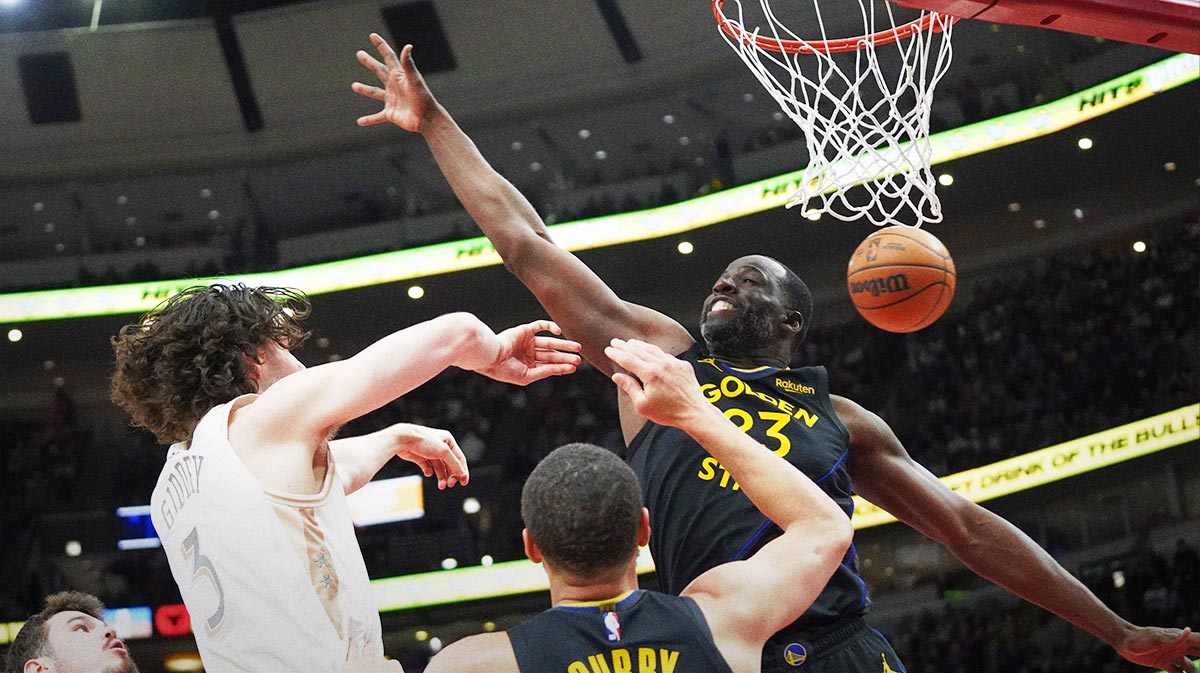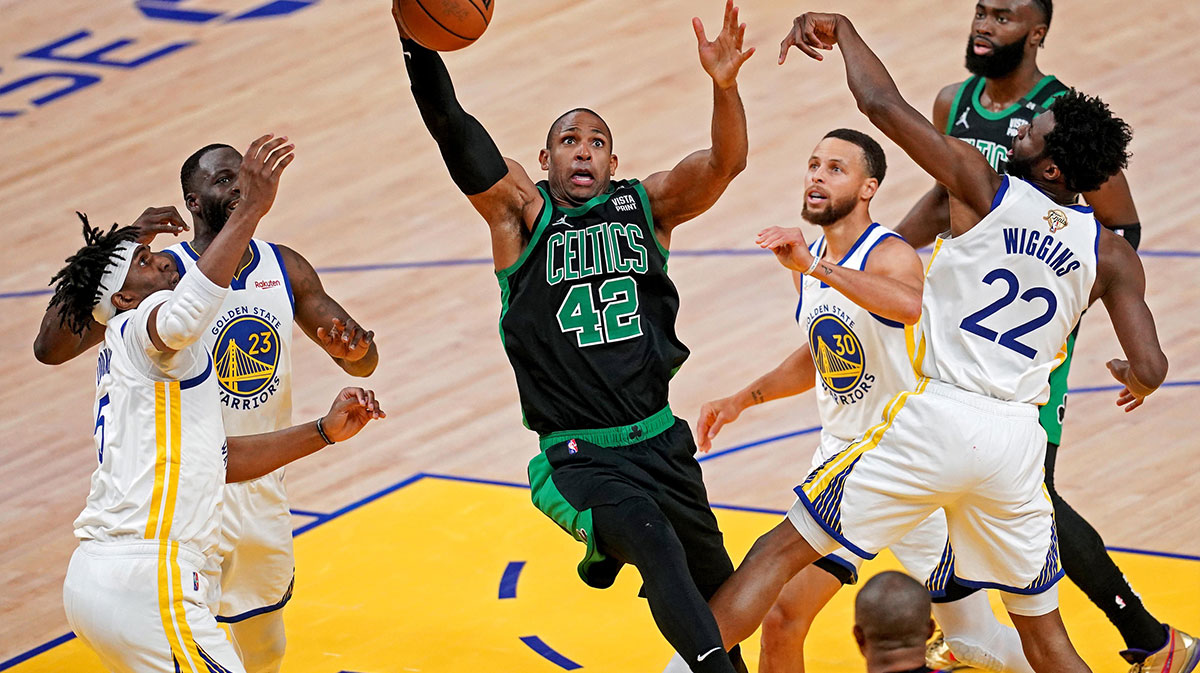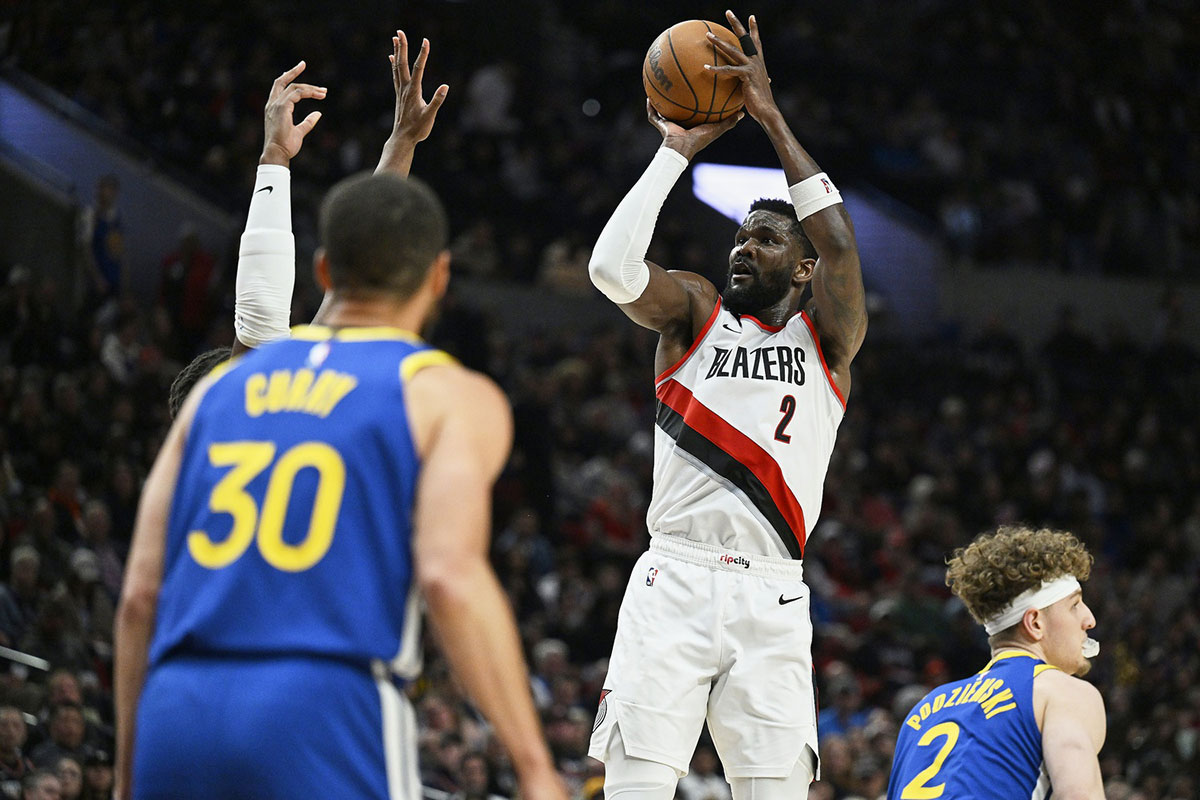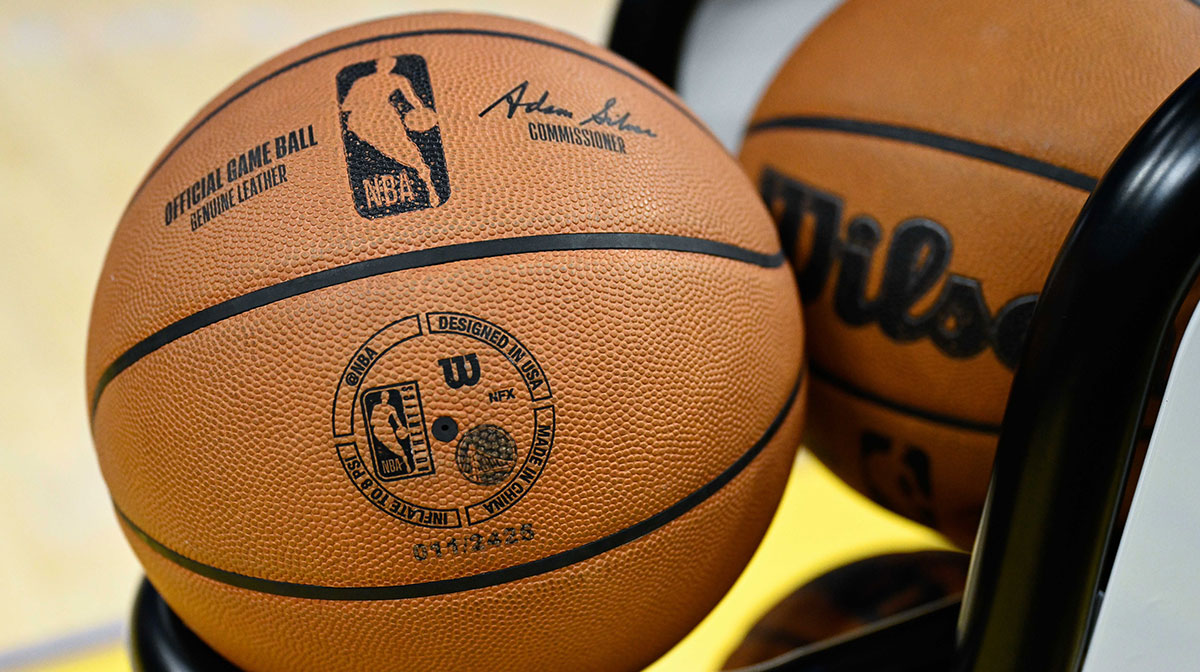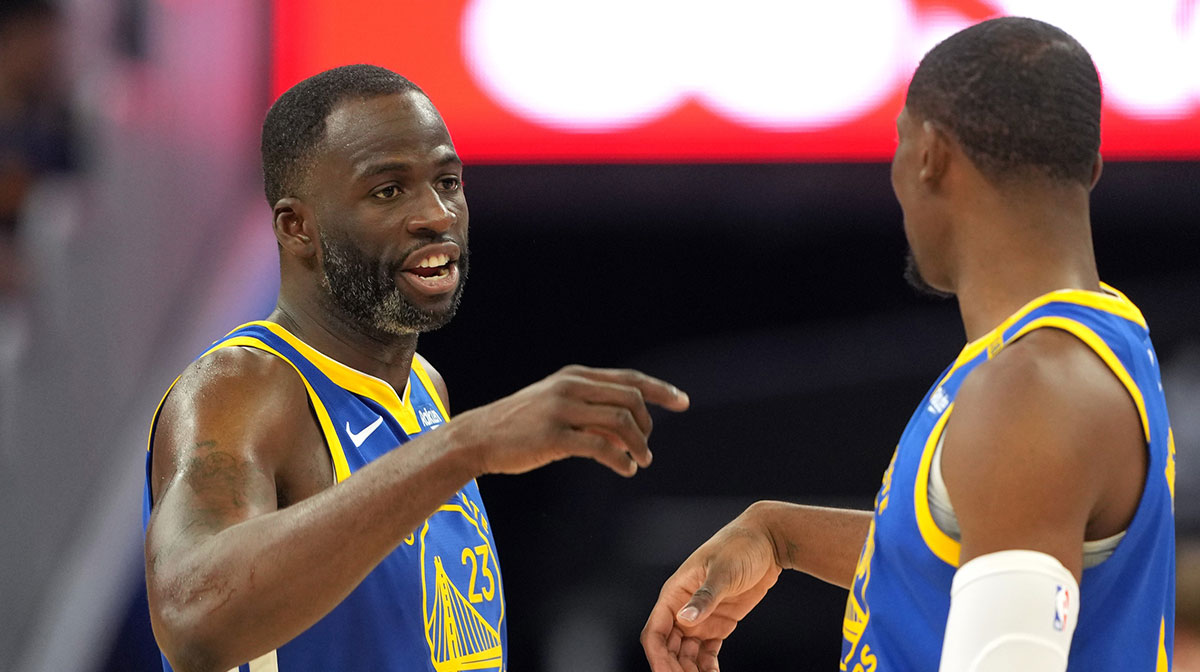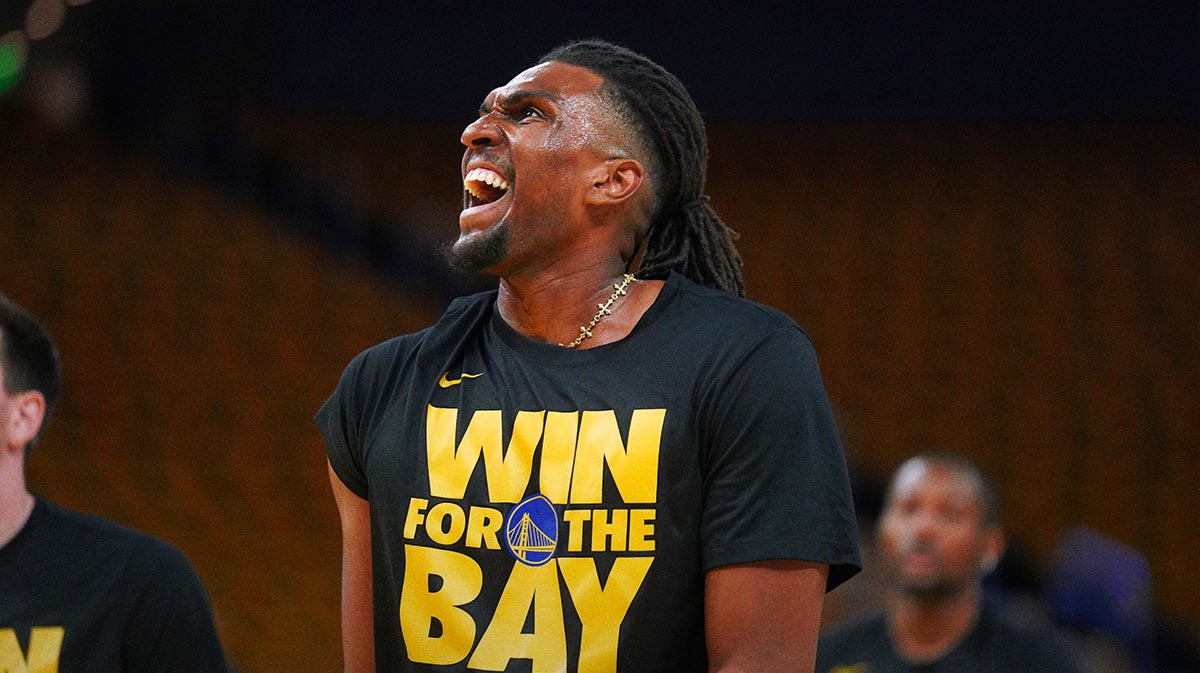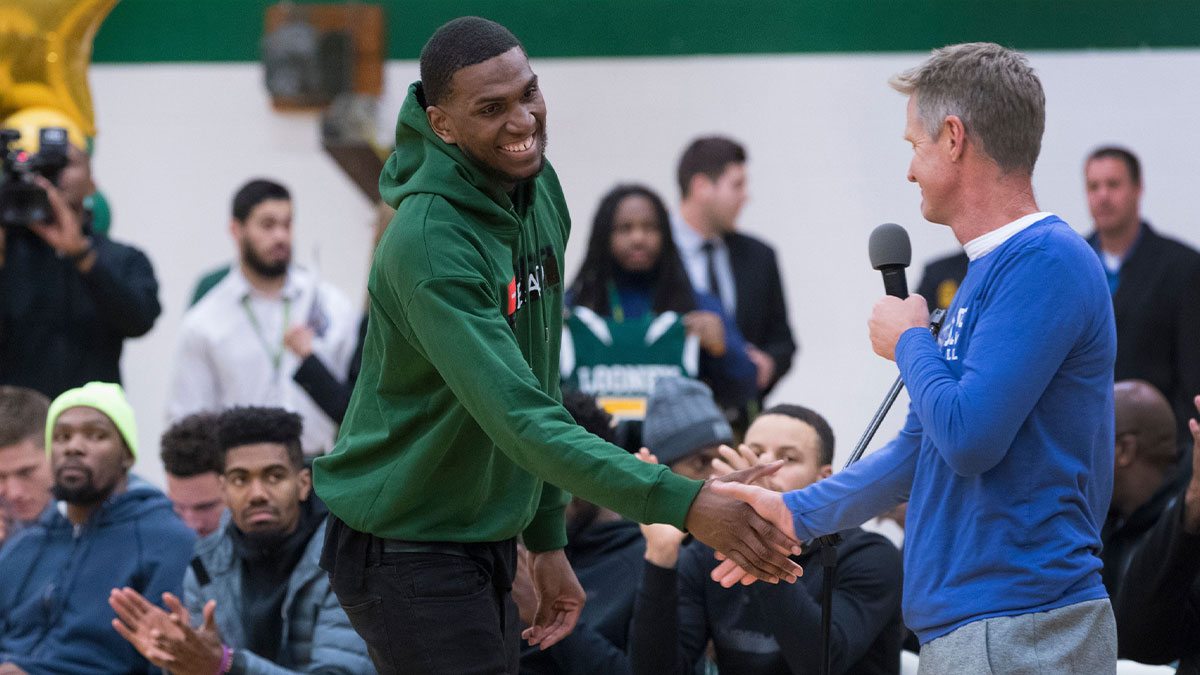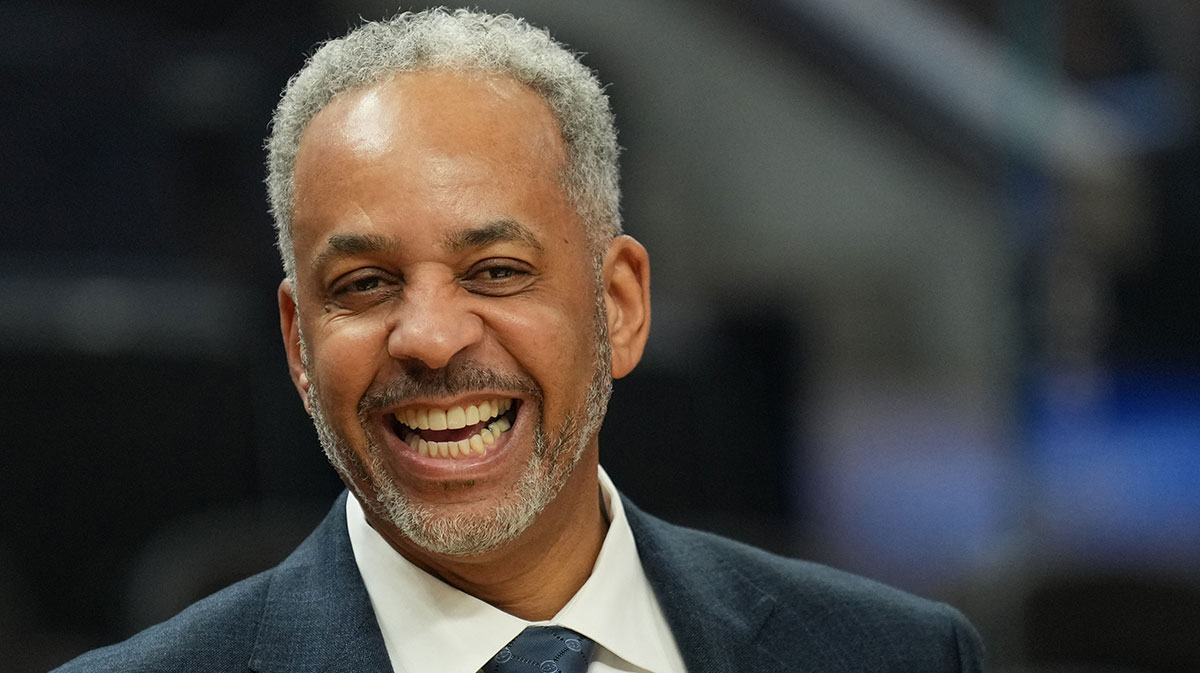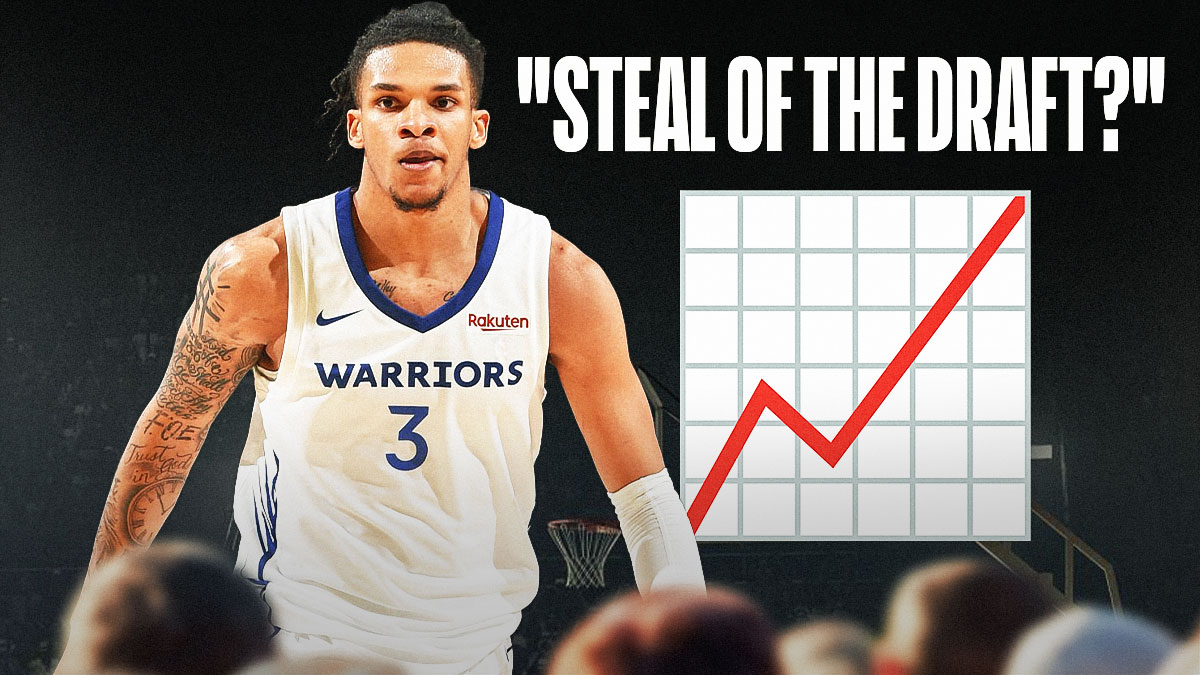For the past few seasons, the Golden State Warriors have felt inevitable. But with miles wearing out some treads and injuries mounting, the full strength of the Warriors has started to flicker.
In his return from an ankle injury, Stephen Curry was just starting to get the rust off against the Atlanta Hawks, pouring in 29 points in 25 minutes on 18 shots after a clunky first quarter. Then, time slowed to a crawl. JaVale McGee went up for a wild shot block, fell sprawling, and bowling-balled into Curry’s legs.
At first, it seemed as if he’d re-sprained his ankle. But as he tried to walk it off and the trainer worked on his knee, it became clear it was much worse. Depression set in for fans of the Warriors, fine shooting and reckless passing.
The diagnosis is a Grade 2 sprain of the left MCL, which means rehab for the rest of the regular season and a re-evaluation in three weeks.
Stephen Curry injury update: pic.twitter.com/Me2a0bARjk
— Warriors PR (@WarriorsPR) March 24, 2018
The typical Grade 2 MCL recovery takes six weeks. For instance, last year Kevin Durant had a similarly severe injury and missed exactly six weeks. That would put Curry’s return in the middle of the second round of the playoffs. This is a good time to reflect on how much the Warriors chances are of winning the title are reduced with a limited Curry or none at all.
What were the Warriors chances at full health?

It’s not clear what the Warriors chances were with a fully healthy team. Golden State has played with a noticeable lack of intensity all season, rarely playing as well as last year. Raw shooting skill plus passable execution of their motion offense gives them a team offensive rating right at the top with the Houston Rockets. But defense is where the slippage has happened. Here is the team defensive rating from the last five years.
The Warriors lost the season series 2-1 against Houston, but it was very close. The two Houston wins were on opening night, with the Warriors playing poorly, and then in Houston at the end of a long road trip. The Warriors win was against Houston without Chris Paul. The difference between the teams was Kevin Durant’s opening night game-winner was a split second late. So the teams were very close in the regular season, and now Houston will have home court advantage.
Furthermore, the West is deep. The Oklahoma City Thunder walloped the Warriors in two games, with the Warriors finally returning the blowout favor in the third game.
Oklahoma City is a bad matchup for Golden State as I’ve analyzed elsewhere. The San Antonio Spurs remain a difficult matchup, and if they get a surprise infusion of Kawhi Leonard, they become a very dangerous team. The rest of the West has gotten better than last year.
History tells us it’s basically impossible to go to four straight Finals. The last two teams to get to four straight were LeBron’s 2011-2014 Heat and Magic’s 1982-1985 Lakers. Both teams went only 2-2 in the Finals.
To favor the healthy Warriors, you have to believe they can beat the historical odds, flip the switch and go to a higher playoff gear; and possibly invoke theories that James Harden and Chris Paul have character flaws exposed in the playoff pressure.
Now how does the situation change with an injured Stephen Curry?
What would a limited Stephen Curry look like? Lessons from the 2016 Playoffs

From his track record in the 2016 playoffs, when Curry came back early (in two weeks) from a Grade 1 left MCL sprain, we saw this kind of injury limited Curry’s game.
It severely limited his explosiveness to the rim as seen in his FG% for shots from three feet or less in the playoffs: 2013: 66.7%, 2014: 63.6%, 2015: 70.1%, 2016: 54.0%. He also was also reduced to one dribble pull-up moves on the perimeter and outside of a hot streak at the end of Game 3 in Portland (“I’m Back”) and in Games 6 and 7 vs OKC, he shot quite poorly.
This led to a reduction of his gravity and a more inefficient offense. As the league caught on, by the Finals, this allowed Cavs coach Tyrone Lue to play Curry with a switching defense and single-cover him with Tristan Thompson and Kevin Love (most famously at the end of Game 7). In comparison, when the Cavs tried switching against a healthy Curry in 2017, Curry roasted Thompson and Love in Game 1, and Lue went back to double-teaming Curry.

So it’s clear that even if Curry returns, he will very likely be limited. The flip side of this argument is that even a limited Curry was good enough to get the Warriors to within one minute of a championship. However, the 2016 Warriors had a structural flaw, in that nobody on the roster besides Curry could create a shot off the dribble. The other Warriors were able to generate enough offense through Kerr’s motion sets, enough to beat a dysfunctional Rockets team and an unready Blazers team, but motion sets can be defused with a switching defense, which 2018 NBA teams are now much better equipped to play, thanks (ironically enough) to the Warriors popularizing it.
The 2018 Warriors are very different of course. Of the key players, Golden State replaced Harrison Barnes from 2016 with Kevin Durant, and launched a thousand cupcake and snake memes. Beyond the fact that it’s Kevin Freaking Durant, KD gives the Warriors an important second option for shot creation. It’s a fair guess to say that the Warriors with a 2016 Playoffs Curry will still be a championship contender.
The Warriors Defense Without Curry

In order for Curry’s return to matter, the Warriors have to make it to and succeed in the second round without him. As one might expect, the Warriors were better with Curry off the court on defense (opponents scored 3.9 points per 100 possessions worse) and much worse on offense (the Warriors scored a stupendous 15 points per 100 worse). So the Life Without Curry formula was set in December during the Warriors’ 9-2 stretch after Curry’s first injury this year: defend and use Durant.
Curry badly sprained his ankle on Dec. 4th in New Orleans. Two days later, with Curry in crutches, the team had a meeting in Charlotte. Their defense, to that point in the season, had underwhelmed. That had to change, Steve Kerr told his players.
It did. Over the next 10 games, the Warriors went 9-1 playing a Utah Jazz-like style, spitting out a much worse than usual 106.8 offensive rating but a league-best 97.7 defensive rating during that period, slowing the pace to 98.6 possessions per game, which would rank 20th in the league, much slower than their typical 102.2 pace, fourth highest.

Durant’s presence allows GSW to replace Curry with a defensive specialist while having a passable offense. Steve Kerr replaced Stephen Curry with more minutes for the taller, longer Shaun Livingston and Andre Iguodala (and a sprinkling of minutes for a disoriented Quinn Cook), and GSW played their switching defense with much energy.
Kevin Durant anchored the defense with an intimidating on-ball presence blocking shots near the rim, to the extent that he got national buzz as Defensive Player of the Year. After a visually impressive showing against the Cavs on Christmas, I wrote a piece on Durant’s spectacular defensive strengths and less-obvious weaknesses. Here’s an example of Durant’s imprecise switching:
The Warriors Offense Without Curry
During the Curry-free December, on offense, the Warriors used a steady supply of Kevin Durant power, and expect more of the same until/if Curry returns to effectiveness. To be sure, the Warriors continue to run their motion offense. But the best defenses in the league switch screens against the Warriors, which defuses their offensive power. Golden State still tries to take advantage of Durant’s offensive gravity and isolation skill.
The Warriors don’t typically just give the ball to Durant and clear out for an isolation. This is against coach Steve Kerr’s religion, and it’s more efficient to first see if motion can develop an open spot-up shot or a cut to the basket.
Here are three key plays to look for.

3. Durant as the ballhandler in high pick and roll
Durant can run the standard high pick and roll, sometimes with Draymond Green screening, sometimes with David West. It’s theoretically better for Curry to run it with a big screener because if the defense switches, then a big guards Curry or a small guards the big roller. In Durant’s case, his defender is typically the same size as the screener’s defender. But in reality, there’s a big benefit to Durant attacking a bigger player after gathering momentum and a half-step or space from the screen or switch. Compare this analysis of last year’s Jazz series where Durant torched Rudy Gobert with the high pick and roll in a tight Game 3.
2. Durant running the offense from the post in Double Punch
Here’s a simple play the Warriors use to get the ball to Durant in the high post. It works better if Curry is in it, but it works with other players. Basically, the ball handler runs off a wing double screen then enters the ball to Durant in the post. Durant reads the defense guarding the other two running split cuts. If nothing develops, Durant attacks in isolation.
1. Durant runs off-ball in a triple split cut
Steve Kerr and the 2014 Warriors popularized a simple form of the split cut where a passer is fed in the high post (or wing) and two men screen and cut off each other. The league took a year to adjust, but in 15-16, the new orthodox defense was established by the Mavericks and Spurs: expect the split cuts, switch defenders, and bump the cutter. So in response, the Warriors rarely run the two-man split cut any more. They’ve developed plays where a post passer is fed and three players come together to perform a variety of screens, dives and pops. It’s much harder for three men on defense to coordinate switches.
Here’s an effective version with Durant as the gravitational center.
The X-Factor: Quinn Cook

One difference from December is Klay Thompson and Draymond Green are more injured, and old man David West has started to finally look his age. On the other hand, a positive difference is the surprise emergence of Quinn Cook as a legitimate NBA point guard. In December, Cook was called up from the G-League bench depth after Steph Curry’s first injury. As Melissa Rohlin wrote:
Cook was a bit tentative at first with the Warriors. When he got playing time, his main goal was not to mess up.
“Just not stepping on anybody’s toes,” Cook said. “I only knew about three or four plays, so I tried to stick with that and just get the guys the ball.”
But in Curry’s last stretch of injury time, Quinn Cook has exploded with confidence and in the box score. With every All-Star out of the lineup, Cook had the freedom that comes with being literally the only Warrior would create a shot off the dribble. He hasn’t been afraid to take and make off-the-dribble shots and started showing his G-League form. He poured in 25 points against a poor Kings team, then 28 against a worse Suns team, but then surprised people by dropping a line of 20-5-5 against a fully-motivated Spurs defense.
Cook showed that he could score both on-ball in a Curry role, and off-ball in a Klay Thompson role:
It’s very likely that Quinn Cook will be elevated to starting point guard for the rest of the season, giving the Warriors a second shot-creator behind Durant. There’s an important technical obstruction to Cook playing in the playoffs: as a two-way player, he is not eligible. Golden State would have to convert his contract to a regular league minimum contract, which is easy, but they would also have to clear a spot for him by waiving someone on the 15-man roster.
Practically speaking this would mean waiving Omri Casspi (a veteran who came on a minimum over better deals), Patrick McCaw (erratic, promising youngster), Damian Jones (athletic youngster stashed in the G-League and already on the books for next year), Kevon Looney (the Warriors best big defender against the pick and roll), or JaVale McGee (useful, wildly flailing big). Casspi seems most likely to be cut, but this would be a very tough decision by Kerr, who is hoping the decision will become clearer by the last day of the regular season when the decision has to be made.

Conclusion
With so many unknowns, there’s not much to conclude. The Warriors showed in December that without Curry they could be a contender that won with excellent defense and a Durant-led offense. The lack of Curry might produce the appropriate fear and focus to have the Warriors overcome their championship hangover. And Curry would return to help with the Western Conference Finals, albeit in limited, rusty form. But with the deep West and the absurdly good (regular-season) Houston Rockets waiting with home-court advantage, this will be the Warriors’ most difficult championship run. We should not expect the Warriors to be the favorites anymore, and a year that was lazily written off as boring has become uncertain and exciting.

